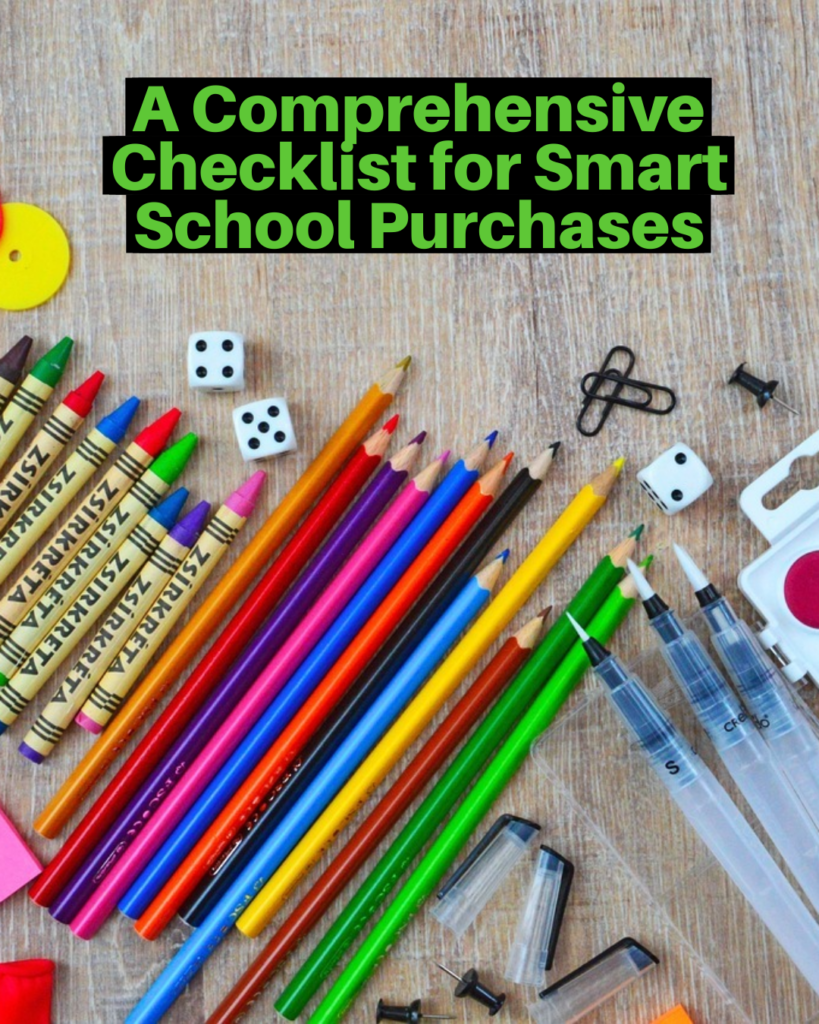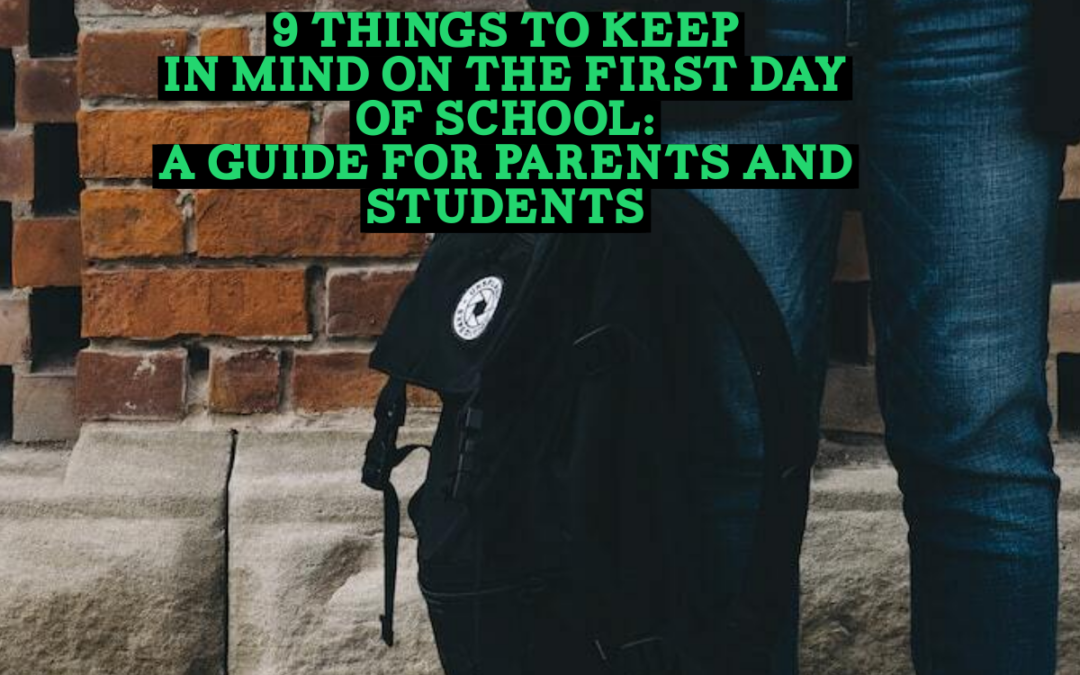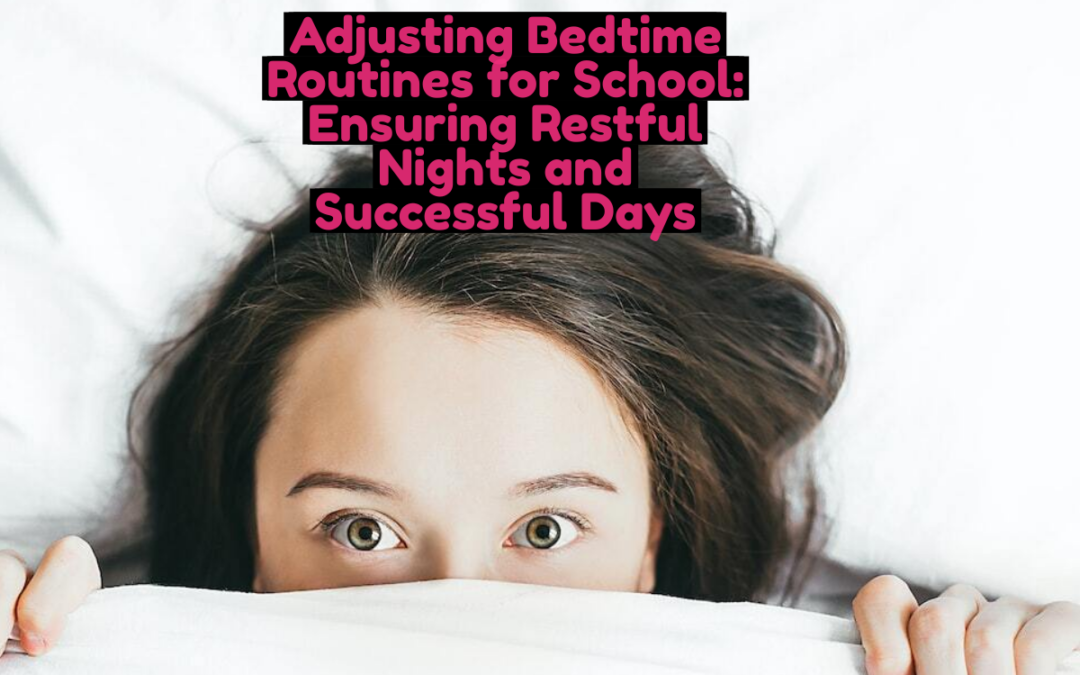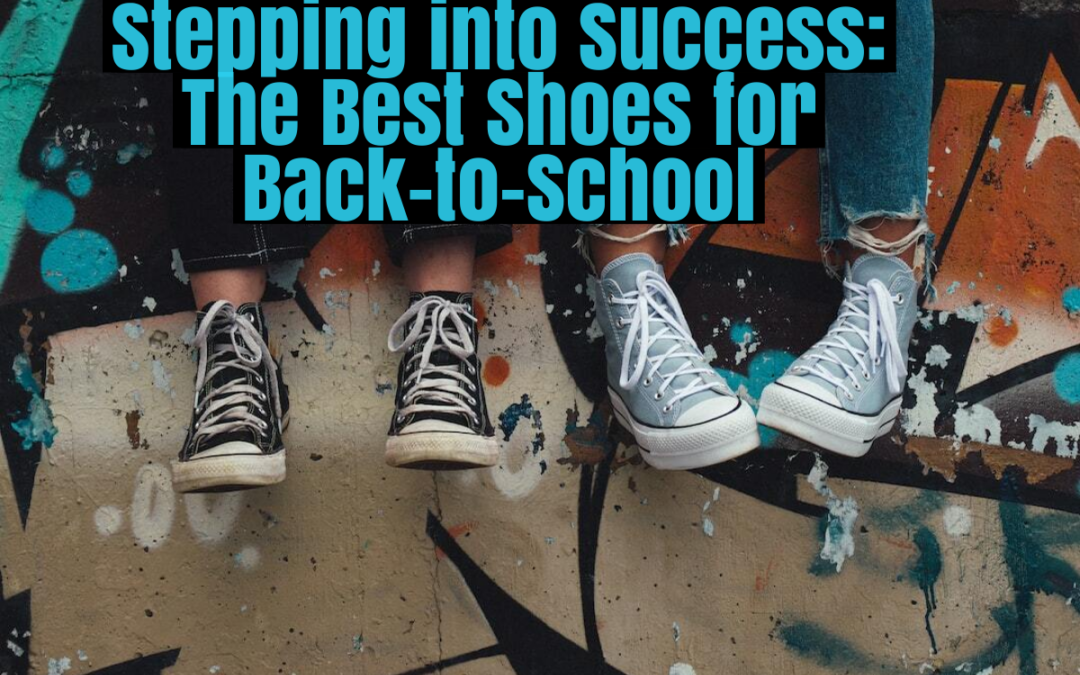
by bitsofthewilliams | Jul 18, 2023 | BACK TO SCHOOL EDITION
As the back-to-school season approaches, it’s time to start preparing for a successful academic year. One crucial aspect of preparation is ensuring you have all the necessary supplies and equipment for school. To help you stay organized and make efficient purchases, we’ve put together a comprehensive checklist for school supplies. From essentials like stationery and backpacks to technology and organizational tools, this checklist will ensure you have everything you need to thrive in the upcoming school year.
-
Stationery and Writing Supplies:
☐ Pens, pencils, and erasers
☐ Highlighters
☐ Notebooks and binders
☐ Loose-leaf paper
☐ Sticky notes
☐ Index cards
☐ Ruler
☐ Scissors
☐ Glue sticks or liquid glue
☐ Stapler and staples
☐ Calculator
-
Backpack and Lunch Gear:
☐ Sturdy backpack with proper back support
☐ Lunch box or bag
☐ Reusable water bottle
☐ Food containers for snacks and meals
☐ Utensils and napkins
-
Technology and Electronics:
☐ Laptop, tablet, or desktop computer (if required by the school)
☐ Charging cables and adapters
☐ Headphones or earbuds
☐ USB flash drive or external hard drive for file storage
☐ Printer (if needed)
☐ Internet router or Wi-Fi access (if required for remote learning)
-
Organizational Tools:
☐ Planner or digital calendar for tracking assignments and due dates
☐ Folders or accordion file organizers for sorting papers
☐ Dividers and sheet protectors for binders
☐ Sticky tabs for marking important pages
☐ Desk organizer or storage containers for keeping supplies tidy
☐ Wall calendar or whiteboard for displaying important dates and reminders
-
Classroom Essentials:
☐ Classroom-friendly tissues
☐ Hand sanitizer or antibacterial wipes
☐ Face masks (if required)
☐ Extra set of clothing (for younger students)
☐ Indoor shoes or slippers (if required)
-
Clothing and Accessories:
☐ School uniforms or appropriate clothing as per the school’s dress code
☐ Comfortable shoes suitable for physical education classes
☐ Outerwear for different weather conditions (jackets, raincoats, etc.)
☐ Hats, gloves, and scarves (if needed)
☐ Backpack rain cover (to protect supplies on rainy days)
-
Art and Craft Supplies (if applicable):
☐ Colored pencils, markers, and crayons
☐ Sketchbooks or drawing pads
☐ Paints and brushes
☐ Construction paper and cardstock
☐ Craft scissors and adhesive materials
☐ Clay or modeling dough (if required)
By following this comprehensive checklist for school purchases, you can ensure that you’re fully equipped for a successful academic year. Remember to check with your school or teachers for any specific requirements or recommendations. Being well-prepared with the necessary supplies and equipment will not only help you stay organized but also contribute to a more productive and enjoyable learning experience. Start checking off the items on this list early to avoid last-minute rush and ensure a smooth transition into the new school year. Here’s to a year filled with growth, learning, and accomplishment!


by bitsofthewilliams | Jul 15, 2023 | BACK TO SCHOOL EDITION
The first day of school is an exciting milestone for both parents and students. It sets the tone for the entire academic year and can be filled with a mix of emotions. To ensure a smooth and successful start, it’s essential to be prepared and keep a few key things in mind. In this blog post, we will explore nine important considerations for parents and students as they embark on the first day of school.
Get Organized in Advance: To avoid unnecessary stress, organize school supplies, uniforms, and any required paperwork well in advance. Check if there are any specific guidelines or forms to be filled out and ensure you have everything ready. This preparation will save you time and allow you to focus on the important moments of the first day.
Establish a Routine: Set a morning routine that allows for ample time to get ready, have a nutritious breakfast, and travel to school. A consistent routine helps create a sense of structure and reduces morning chaos. It’s also essential to establish an after-school routine that includes time for homework, extracurricular activities, relaxation, and family time.
Plan Transportation: If your child will be using school transportation, familiarize yourself with the pickup and drop-off points and timings. If you’re driving your child to school, plan the route in advance, taking into account any traffic considerations. Ensuring a smooth transportation plan will alleviate stress on the first day.
Encourage Open Communication: Encourage your child to express their feelings and concerns about the first day of school. Create an open space for conversation and listen attentively to their thoughts. Assure them that it’s normal to feel a mix of excitement and nervousness, and that their feelings are valid. By promoting open communication, you can provide reassurance and support throughout the transition.
Connect with Classmates: Encourage your child to reach out to classmates, both familiar faces and new acquaintances. Building connections with peers fosters a sense of belonging and helps alleviate first-day jitters. Encourage your child to introduce themselves, engage in conversations, and participate in ice-breaker activities if available. This interaction will lay the foundation for positive social experiences throughout the school year.
Foster Positive Expectations: Remind your child of their strengths and past successes, instilling confidence and positive expectations for the first day. Discuss the exciting opportunities that await them, such as new friendships, engaging lessons, and extracurricular activities. Encourage a growth mindset, emphasizing that challenges are opportunities for learning and personal growth.
Pack a Nutritious Lunch: Prepare a well-balanced, nutritious lunch that will keep your child energized throughout the day. Include a variety of food groups, such as fruits, vegetables, whole grains, and lean proteins. Involve your child in the planning and packing process to promote healthy choices and ensure they enjoy their meal.
Practice Self-Care: On the first day of school, prioritize self-care for both parents and students. Get a good night’s sleep, eat a healthy breakfast, and engage in activities that promote relaxation and stress relief. Encourage your child to take deep breaths and engage in positive self-talk if they start feeling overwhelmed. As parents, take time for yourself to recharge and approach the day with a calm and positive mindset.
Celebrate Achievements: Celebrate the achievements and milestones of the first day, regardless of how big or small they may seem. Take time to reflect on the positive aspects of the day, discussing them as a family. Recognize the effort put forth by your child and acknowledge their bravery in embracing new experiences. This celebration will reinforce their confidence and set a positive tone for the rest of the school year.
The first day of school is an exciting time filled with possibilities and new beginnings. By keeping these nine considerations in mind, parents and students can navigate the day with confidence, ease, and a positive mindset. Remember to prioritize preparation, communication, self-care, and celebration to ensure a successful start to the academic journey. Embrace the opportunity for growth, learning, and creating lasting memories. Here’s to a fantastic first day and a remarkable school year ahead!

by bitsofthewilliams | Jul 15, 2023 | BACK TO SCHOOL EDITION
The transition from summer vacation to the school year can be challenging, especially when it comes to adjusting sleep schedules. Establishing a consistent bedtime routine is essential for ensuring children and adolescents get the rest they need to thrive academically and emotionally. In this blog post, we will explore effective strategies and tips to help parents and guardians seamlessly transition their children into healthy sleep habits for school.
Gradual Adjustments: Rather than abruptly changing bedtime schedules, it is advisable to make gradual adjustments in the weeks leading up to the start of school. Begin by shifting bedtime 15-30 minutes earlier each night, allowing your child’s body to adapt slowly. This approach will minimize resistance and help their internal clock align with the upcoming school schedule. Additionally, adjust wake-up times accordingly to maintain a consistent sleep duration.
Consistent Bedtime Routine: Creating a predictable bedtime routine is key to signal to your child’s body that it’s time to wind down and prepare for sleep. Start by establishing a specific time for the routine, ensuring it allows for an adequate amount of sleep. The routine should include calming activities such as reading, taking a warm bath, or engaging in quiet play. Dimming lights and reducing screen time at least an hour before bedtime can help promote the release of melatonin, the hormone responsible for regulating sleep. Encourage your child to choose soothing activities that promote relaxation and avoid stimulating ones that may hinder sleep.
Optimal Sleep Environment: A sleep-friendly environment is essential for quality rest. Create a comfortable, cool, and dark bedroom to facilitate a restful night’s sleep. Consider investing in blackout curtains, a supportive mattress, and cozy bedding. Minimize noise distractions and use a white noise machine if necessary. Limit electronic devices in the bedroom and encourage your child to charge them outside the sleeping area to avoid temptation. Ensure that the bedroom is tidy and free of clutter, creating a calm and inviting space conducive to relaxation.
Consistency and Communication: Consistency is key when it comes to maintaining healthy sleep routines. Encourage open communication with your child, explaining the importance of quality sleep for their well-being and academic success. Involve them in the process, allowing them to provide input and discuss any concerns they may have. By fostering an open dialogue and jointly establishing bedtime rules, you can empower your child to take ownership of their sleep habits, creating a sense of responsibility and accountability.
Adjusting bedtime routines for school requires planning, patience, and persistence. By gradually transitioning sleep schedules, establishing consistent routines, optimizing sleep environments, and fostering open communication, parents can set their children up for restful nights and successful days. Prioritizing healthy sleep habits not only supports academic performance but also contributes to overall well-being, enabling children to approach each day with energy, focus, and enthusiasm. Remember, the key is to provide a nurturing environment that values and prioritizes restful sleep.

by bitsofthewilliams | Jul 15, 2023 | BACK TO SCHOOL EDITION
The summer season, with its sunny days and longer evenings, often brings about a sense of relaxation and a break from routine. While this can be enjoyable, it can also lead to a decrease in productivity and motivation, commonly known as the “summer slump.” However, fear not! In this blog post, we will explore effective strategies to help you recover from the summer slump and get back on track with your goals and responsibilities.
-
Reflect and Set New Goals: The first step in recovering from the summer slump is to reflect on your current situation and assess your goals. Take some time to evaluate what you have accomplished so far and identify areas where you may have fallen behind. Use this opportunity to reset and set new goals for the remaining summer months. Setting realistic and measurable targets will reignite your motivation and provide you with a sense of purpose to overcome the slump.
-
Create a Routine: During summer, it’s easy to fall out of a routine, leading to a lack of structure and decreased productivity. Establishing a new routine can help combat the slump. Start by setting a consistent wake-up time and bedtime. Plan your day, allocating specific time slots for work, leisure activities, exercise, and personal growth. By structuring your day, you create a sense of discipline and establish a framework that will help you stay focused and motivated.
-
Break Tasks Into Manageable Chunks: Large tasks can feel overwhelming and lead to procrastination. To regain your productivity, break your tasks into smaller, manageable chunks. This approach makes the workload more approachable and less daunting. Set specific deadlines for each smaller task, allowing you to track your progress and celebrate accomplishments along the way. By tackling tasks one step at a time, you’ll gradually build momentum and regain your productivity levels.
-
Find Inspiration and Rekindle Motivation: Sometimes, all you need to recover from the summer slump is a fresh dose of inspiration. Seek out motivational resources such as books, podcasts, or videos that align with your interests and goals. Surround yourself with positive influences and connect with like-minded individuals who can provide support and encouragement. Additionally, revisit your long-term aspirations and remind yourself of why you started in the first place. Reigniting your motivation will fuel your determination to push through the slump and achieve your desired outcomes.
-
Embrace Self-Care and Balance: The summer slump may also be a sign of burnout or fatigue. Prioritize self-care and find a healthy work-life balance. Take breaks when needed, practice relaxation techniques, engage in activities that bring you joy, and spend quality time with loved ones. Nurturing your physical and mental well-being will recharge your energy levels and improve overall productivity. Remember, striking a balance between work and leisure is essential for sustained productivity throughout the year.
While the summer slump can be a challenging phase, it is entirely possible to recover and regain your productivity. By reflecting on your goals, creating a routine, breaking tasks into manageable chunks, seeking inspiration, and embracing self-care, you’ll be well on your way to overcoming the slump and achieving success in your endeavors. Get ready to make the most of the remaining summer months!


by bitsofthewilliams | Jul 13, 2023 | BACK TO SCHOOL EDITION, PARENTING
As the summer comes to an end, it’s time to start preparing for the new school year. While shopping for backpacks, notebooks, and clothes, don’t forget to pay attention to one essential item: shoes! A good pair of shoes not only completes a student’s outfit but also plays a crucial role in their comfort and support throughout the school day. In this blog post, we’ll explore some of the best shoes for back-to-school, focusing on style, durability, and most importantly, foot health.
Sneakers: Sneakers are a classic and versatile choice for students of all ages. Look for well-cushioned and supportive sneakers that provide ample arch support and shock absorption. Brands like Nike, Adidas, New Balance, and Converse offer a wide range of stylish and comfortable options. Opt for breathable materials and consider shoes with adjustable straps or laces for a secure fit.
School-Approved Dress Shoes: For students who need to adhere to a formal dress code, finding school-approved dress shoes is essential. Look for styles that are both stylish and comfortable, as students will be wearing them for long periods. Brands like Clarks, Cole Haan, and Rockport offer dress shoes with cushioned insoles and supportive features. Choose shoes made from high-quality materials like leather for durability.
Comfortable Flats or Loafers: Girls looking for a more sophisticated alternative to sneakers may consider comfortable flats or loafers. Look for styles with cushioned insoles and a supportive sole. Ballet flats from brands like Toms or loafers from Sperry Top-Sider are great options. Remember to prioritize comfort and ensure proper fit to avoid any discomfort during the school day.
Athletic Shoes for Sports and Physical Education: For students involved in sports or physical education classes, it’s crucial to have appropriate athletic shoes. Consider the specific sport or activity when choosing shoes. Running shoes from brands like Brooks, Asics, or Saucony are excellent choices for general physical activities. For specific sports like soccer, basketball, or tennis, look for shoes designed for those activities to provide the necessary support and traction.
Casual and Versatile Shoes: For students who prefer a more casual and versatile shoe option, there are plenty of choices available. Canvas sneakers, slip-on shoes, or even comfortable sandals can be suitable for everyday wear. Brands like Vans, Keds, and Birkenstock offer stylish options that provide both comfort and durability. Ensure that the shoes have good arch support and a cushioned footbed for all-day wear.
Boots for Cooler Weather: As the school year progresses and the weather cools down, it’s important to have a pair of reliable and weather-appropriate boots. Look for boots made from waterproof materials with good traction to handle rain or snow. Brands like Timberland, Sorel, and Dr. Martens offer durable and stylish options suitable for various weather conditions.
Consider Fit and Size: Regardless of the shoe style chosen, it’s crucial to prioritize proper fit and size. Ill-fitting shoes can lead to discomfort, foot pain, and potential foot problems. Ensure that there is enough room for toes to wiggle, and the shoe provides adequate support around the arch and heel. Measure your child’s feet regularly to account for growth and consult the shoe brand’s sizing guidelines for accuracy.
Selecting the best shoes for back-to-school involves considering factors like style, comfort, durability, and foot health. Whether it’s sneakers, dress shoes, flats, athletic shoes, casual options, or boots, there are plenty of choices available to suit every student’s needs and preferences. Remember to prioritize comfort, proper fit, and quality to ensure your child can step confidently into a successful school year. Happy shoe shopping and may the new school year be filled with comfortable and stylish steps!








